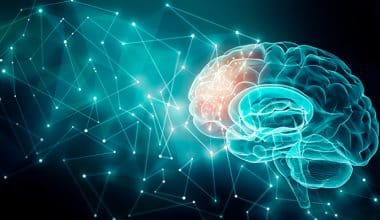Have you ever wondered why a nation borrows money instead of just printing more money? With an understanding of money neutrality, you will understand why having excessive money in circulation isn’t good.
Money Neutrality is a theory in economics that states that changes in the supply of money don’t after the real variable in the nation but the nominal variables.
Here is a practical example, If your country should increase the money supply, neutral money says that the prices of things will increase by that exact amount. That is to say, increasing or doubling the money supply reduces the currency value or unit by 50%. Let dive into the topic fully to understand more about neutral money.
Before we go into explaining more about the neutrality of money. It is important we understand the basic history of Money Neutrality. It was first found in the Cambridge economics tradition between 1750 – 1870. But an Australian Economist, Friedrich A. Hayek in 1931 gave the theory the phrase, “Neutrality of Money”.
The first version of this theory believes that no matter the level of money in circulation that will not affect the output or employment. This version stated they won’t be affected even in the short run.
But to an extent, the theory has attracted a lot of criticism from today’s monetarist economists. Some of them, even the notable ones, don’t even accept the money neutrality concept at all, both in the short term and long term.
What is Money Neutrality?
This is a concept of monetary economics that says that an increase in the supply of money will only affect the prices of things having no impact on the real variables or economy. The theory says that change in the stock of money only affects the nominal variables only. Variables like wages, prices, and sometimes the rate of exchange. But it has no effect on the real variables like employment, real GDP, real consumption, etc.
In other words, Money neutrality theory has a firm believes that an increase or decrease in the money supply is the determinant of the change in prices of goods and services. However, understanding the relationship between demand and supply of money will help you understand the neutrality of money more.
This theory is a very important idea in classical economics study and is connected to the classical dichotomy. It explained why the central banks don’t need to print extra money in the nation. And also it shows that the central bank does not have a real impact on the real economy. However, the economy is said to rest in a steady-state equilibrium when zero population coincides with the neutrality of money.
Criticism Neutrality of Money?
But does the neutrality of money undergo critics at all? We answered that somewhere in this article but to elaborate more on criticism of neutral money. Some monetarist economists have criticized this theory, and that is why monetarism has been questioned.
Here is the primary argument about the theory. The argument states that as the supply of money is increasing that the money value is decreasing. But when the excess money goes into circulation, the prices of goods and services will keep increasing. Until it reaches the point of equilibrium. And this happened by counteracting the supply of money that was increased.
The Economists argue that money is neutral in the long run. So based on the neutral money theory, we can say that if the money supply increases by any given percentage, in the long run, the aggregate price level of goods and services will increase by the same percentage.
Neutrality of Money PDF
If you someone who likes reading pdf, here is a list of neutral money pdf.
- https://www.researchgate.net/publication/281734236_Money_Neutrality_Rethinking_the_Myth: (PDF) Neutrality Money : Rethinking the Myth
- https://personal.vu.nl/h.visser/2002.Neutrality%20of%20Money.pdf. 2002. Neutrality of Money.
- http://restud.oxfordjournals.org/content/31/2/147.full.pdf+html. Conditions for Neutral Money, The Review of Economic Studies.
- https://www.oecd.org/economy/outlook/2501816.pdf. Neutrality of Money. Wage Reduction.
- https://www.sciencedirect.com/science/article/abs/pii/0165176594901120. What is the neutrality of money?
- https://mpra.ub.uni-muenchen.de/70113/1/MPRA_paper_70113.pdf. The Review of Literature on Monetary Neutrality.
- https://link.springer.com/chapter/10.1007/978-1-349-19804-7_33. Neutrality of Money.
- http://onlinelibrary.wiley.com/doi/10.1111/1468-0106.00173/pdf. Neutrality of Money in A ClassicalB.
- https://papers.ssrn.com/sol3/Delivery.cfm/SSRN_ID2738140_code402849.pdf?abstractid=2738140&mirid=1 The Concept of Neutral Money.
Kindly go through the above pdf files and learn more about Neutral money.
Money Neutrality CFA
The Chartered Financial Analyst’s view toward the neutral money is this. Just like every other market in economics, there’s always an interaction between the demand and supply of money to be able to create an equilibrium for the price of money.
Neutrality of Money in Keynesian View.
Let’s briefly discuss the neutral money in Keynesian view. John Maynard Keynes was a British economist who formulated a lot of theories in economics. He changed the theory and practice of economic policies of the government. And his theory plays a key role in the monetary view.
He said that a change in money supply can change real variables permanently. He believes that the existence of unemployment is in equilibrium with the economy itself. Basically, Keynes rejected the neutrality of the money idea both in the long and short term.
Neutrality and Non-Neutrality of Money
Money is said to be neutral when it doesn’t affect the price of goods and services and when it doesn’t affect the interest rate of funds. That is to say, printing money will not change the real economy. And according to the theory, additional money neither creates nor destroys anything in the real economy. It does not introduce a new trading pattern or affect the skills or knowledge of the existing economy.
And as a result of this, the total output (the total supply of goods and services that is produced within an economy at a given time) remains constant. So anything that contrary to this theory is known as the Non-Neutrality of money.
Example of the Neutral Money
The best example to illustrate the neutrality of money is when a macroeconomist is studying monetary policy. For instance, studying the Federal Reserve (Fed) of the federal bank. Assuming that the Fed tapped into the open market operation, the economist will not assume that increase or decrease of money supply will affect the real future economy in the long run. The macroeconomist believes that these factors remain constant. And this gives them a clear view and more balanced predictive parameters.
What is the Difference between Neutrality of Money and Super-neutrality of Money?
By now you should have understood what the term “Neutrality of Money” means from this article. Both neutral money theory and super-neutral money theory are used to design and predict the long-term models for a nation’s economy. Though the super-neutrality of money is a stronger belief and concept than the neutrality of money does.
Unlike the neutral money concept, the super-neutral money concept assumes that changes in the money supply will never affect the economic output. In order words, the supply of money doesn’t affect or have no impact on the real variables. But will have an impact on the real money balances.
In What sense is Money Neutral?
We can say that money is neutral when the nominal money supply has no effect on output and the interest rate.
Why is money not considered capital?
According to the economist, money is not capital because it is not a productive resource. It can be used to buy the capital (land, machinery, or tools) that produce goods. But it can’t be quantified as capital. Because money cannot produce goods and services. And for this reason, its increase or decrease can affect the prices of produced goods and services as posited by the neutral money.
What is the money equation?
Understanding the money equation will help a lot in explaining neutral money. The quantity of theory of money
Quantity equation: Money Supply x velocity of money = Price level x Real GDP.
The growth rate of money supply + The growth rate of the velocity of money = growth rate of output + inflation rate.
Is Money Neutral in Short Run?
Well, according to Friedman. In the short run, money was not neutral. Though the modern version of this theory believes that a change in the supply of money may affect the output or unemployment level in the short run. Nevertheless, many macroeconomists still believe that the neutrality of money holds in the long term.
Conclusion
The monetarist economists assume and believe that if the government should inject more money into the macro-economy. That such money injection has a neutral effect on the nominal variables only.






